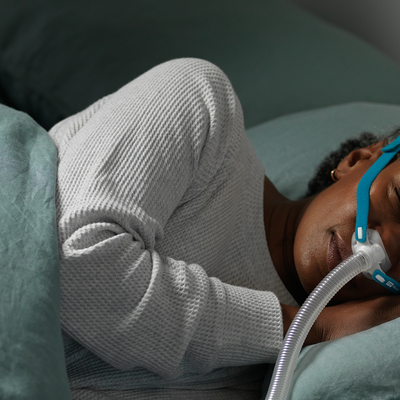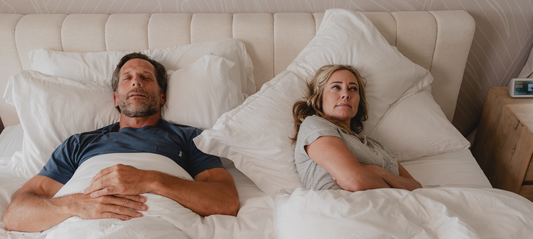Written by Nancy Kirk
June 11, 2024
A recent study shared on CNN explored the benefits related to sleep apnea of a new innovative implant. It’s known as the hypoglossal nerve stimulator, and it was found to be particularly effective for those who are overweight but not severely obese.
These findings could offer a new lease on life for many who struggle with traditional CPAP therapy treatments. Dr. Eric Landsness, a professor of neurology and sleep medicine at Washington University School of Medicine, led the study, which examined 76 patients with varying body mass indexes (BMIs).
To qualify for this implant, a patient must be over 18 and diagnosed with moderate-to-severe OSA. While CPAP remains the gold standard for treating OSA, the hypoglossal nerve stimulator could offer an alternative for those unable to use this treatment for whatever reason.
While an adjustment period is expected for those new to CPAP therapy, most grow to love its many health benefits, from increased energy to sharpened focus and improved sleep. If you have recently been diagnosed with sleep apnea, check out our Top 5 Tips for New CPAP Users.
How Does the Hypoglossal Nerve Stimulator Work?
The hypoglossal nerve stimulator, a small device implanted under the skin near the collarbone, is connected to the hypoglossal nerve, which controls tongue movement. By stimulating the tongue to move forward during sleep, it helps keep the airway open, thus preventing obstruction and ensuring continuous airflow.
However, the study found that the success of this implant decreases in patients with a BMI over 32. For those with higher BMIs, the device may be unsuccessful up to 75% of the time. For each unit increase in BMI beyond 32, the odds of successful treatment decreased by approximately 17%, creating a linear relationship between the two.
Who is the Best Candidate for the Hypoglossal Nerve Stimulator?
The standard for a healthy BMI ranges from 18.5 to 24.9. Individuals with a BMI between 25 and 29.5 are considered overweight, those between 30 and 34.9 are classified as obese, and a BMI above 40 falls into the category of severe or class 3 obesity.
The ideal candidates for the hypoglossal nerve stimulator are individuals diagnosed with moderate-to-severe obstructive sleep apnea (OSA) who are over 18 years old. Candidates should have a body mass index (BMI) under 32, as the device's effectiveness decreases significantly with higher BMIs.
Dr. Landsness' study, involving 76 patients with varying BMIs, found a linear relationship between BMI and the success of the hypoglossal nerve stimulation. Specifically, for each unit increase in BMI beyond 32, the odds of successful treatment decreased by approximately 17%. This highlights the importance of patient selection in ensuring optimal outcomes.
Cons of the Hypoglossal Nerve Stimulator
Despite its high cost, ranging from $50,000 to $100,000, the hypoglossal nerve stimulator is covered by Medicare and many insurance companies for eligible patients. However, like any surgical procedure, it carries inherent risks and requires thorough evaluation to determine suitability.
The hypoglossal nerve stimulator treatment presents a new option for addressing sleep apnea and avoiding its potential health risks. Most patients recover quickly after the surgery, with pain subsiding within the first few days.
The device is activated after one month, and although there may be some discomfort as the stimulation intensity is adjusted, side effects are typically minimal and rarely interfere with the effectiveness of the therapy.
A Promising New Treatment Option for the Right Patient
The introduction of the hypoglossal nerve stimulation offers new hope for OSA patients, especially those who struggle with CPAP. It could have the potential to improve the lives of many individuals who struggle with CPAP therapy for various reasons.
However, it’s important to stress the importance of selecting the right patients for this treatment. A person’s weight is crucial in predicting whether or not they will respond successfully to the treatment. As research continues and more patients undergo this treatment, this innovation may help certain people find relief from the harmful effects of sleep apnea without using CPAP therapy.
The Benefits of CPAP Therapy
For many, adjusting to a CPAP machine can be a challenge. The mask, tubing, and air pressure can be uncomfortable at first and require an adjustment period that may be harder for some than others.
It’s estimated that about a third of patients struggle with using a CPAP machine and may eventually give up on the device. That said, those who go through our LoftaCare program see much higher success rates of up to 90%, thanks to our dedicated team members who help walk you through every step of your sleep apnea journey.
Benefits of CPAP Therapy
- Improves sleep quality: Sleep soundly all night without breathing interruptions.
- Longer-lasting energy: Reduces fatigue and enhances alertness and productivity.
- Lowers risk of disease: Helps reduce blood pressure and heart disease risk.
- Enhances brain power: Improves mood, focus, and memory.
- Reduces accident risk: Increased alertness lowers the likelihood of accidents.
- May decrease depression: Better sleep can reduce depression and anxiety symptoms.
- Supports weight management: Better sleep helps regulate appetite hormones.
- Improves partner's sleep: Reduces snoring and disturbances for your partner.
Despite the many benefits of CPAP therapy, alternatives like the hypoglossal nerve stimulator are a welcome advancement toward more accessible sleep apnea treatments for all. Aside from CPAP and surgery, treatment options for OSA are limited. Lifestyle changes like weight loss or changing sleep positions can help those suffering from sleep apnea, but ultimately, you will see the most impactful results with CPAP therapy.
Do You Have Sleep Apnea?
Sleep apnea is a prevalent condition affecting nearly 1 billion people worldwide. It causes breathing to stop for seconds to minutes multiple times per hour during sleep. This ongoing oxygen deprivation can lead to severe health issues, including high blood pressure, heart disease, stroke, and mental health disorders.
Despite its prevalence, many people are unaware that they have this condition. In fact, John Hopkins Medicine estimates that up to 90% of those with sleep apnea, do not realize they have it. Symptoms like loud snoring and gasping for air often go unnoticed because most people do not regain consciousness when these episodes happen. Other symptoms include a lack of focus, low energy, and excessive daytime sleepiness. If any of these health issues sound familiar, we strongly recommend that you get tested for sleep apnea.
Lofta is Here To Help You Unlock Restful Sleep
Our team is available to help with any questions about managing sleep apnea. For additional health advice and updates, follow our blog for more tips on elevating your sleep health!
Click here to shop our CPAP masks
Source:
CPAP replacement works well for the overweight, not obese, study finds, CNN https://www.cnn.com/2024/04/04/health/cpap-alternative-implantable-sleep-apnea-device-wellness/index.html
Study:
Response to Hypoglossal Nerve Stimulation Changes With Body Mass Index and Supine Sleep
JAMA Otolaryngol Head Neck Surg. 2024;150(5):421-428. doi:10.1001/jamaoto.2024.0261
https://jamanetwork.com/journals/jamaotolaryngology/article-abstract/2817168
















